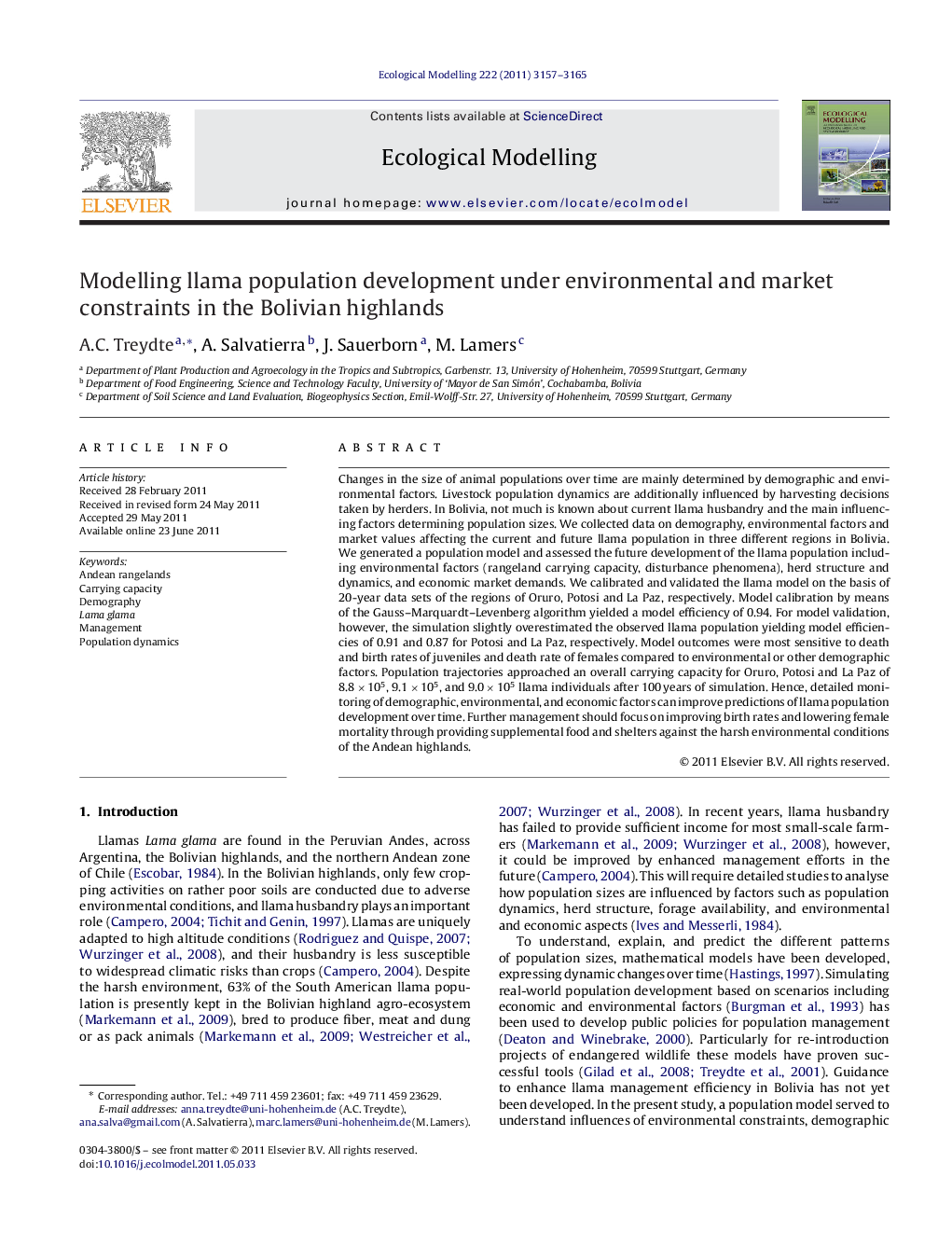| Article ID | Journal | Published Year | Pages | File Type |
|---|---|---|---|---|
| 4376675 | Ecological Modelling | 2011 | 9 Pages |
Changes in the size of animal populations over time are mainly determined by demographic and environmental factors. Livestock population dynamics are additionally influenced by harvesting decisions taken by herders. In Bolivia, not much is known about current llama husbandry and the main influencing factors determining population sizes. We collected data on demography, environmental factors and market values affecting the current and future llama population in three different regions in Bolivia. We generated a population model and assessed the future development of the llama population including environmental factors (rangeland carrying capacity, disturbance phenomena), herd structure and dynamics, and economic market demands. We calibrated and validated the llama model on the basis of 20-year data sets of the regions of Oruro, Potosi and La Paz, respectively. Model calibration by means of the Gauss–Marquardt–Levenberg algorithm yielded a model efficiency of 0.94. For model validation, however, the simulation slightly overestimated the observed llama population yielding model efficiencies of 0.91 and 0.87 for Potosi and La Paz, respectively. Model outcomes were most sensitive to death and birth rates of juveniles and death rate of females compared to environmental or other demographic factors. Population trajectories approached an overall carrying capacity for Oruro, Potosi and La Paz of 8.8 × 105, 9.1 × 105, and 9.0 × 105 llama individuals after 100 years of simulation. Hence, detailed monitoring of demographic, environmental, and economic factors can improve predictions of llama population development over time. Further management should focus on improving birth rates and lowering female mortality through providing supplemental food and shelters against the harsh environmental conditions of the Andean highlands.
► The llama population model yielded a model efficiency of 0.94. ► Prediction of population size was most sensitive to death and birth rates of juveniles and death rate of females. ► An overall carrying capacity of 2.7 × 106 llamas was estimated for the Andean highlands. ► Detailed monitoring of demographic, environmental, and economic factors is recommended. ► Management should focus on increasing birth rates and lowering juvenile mortality by providing supplemental food and shelters.
